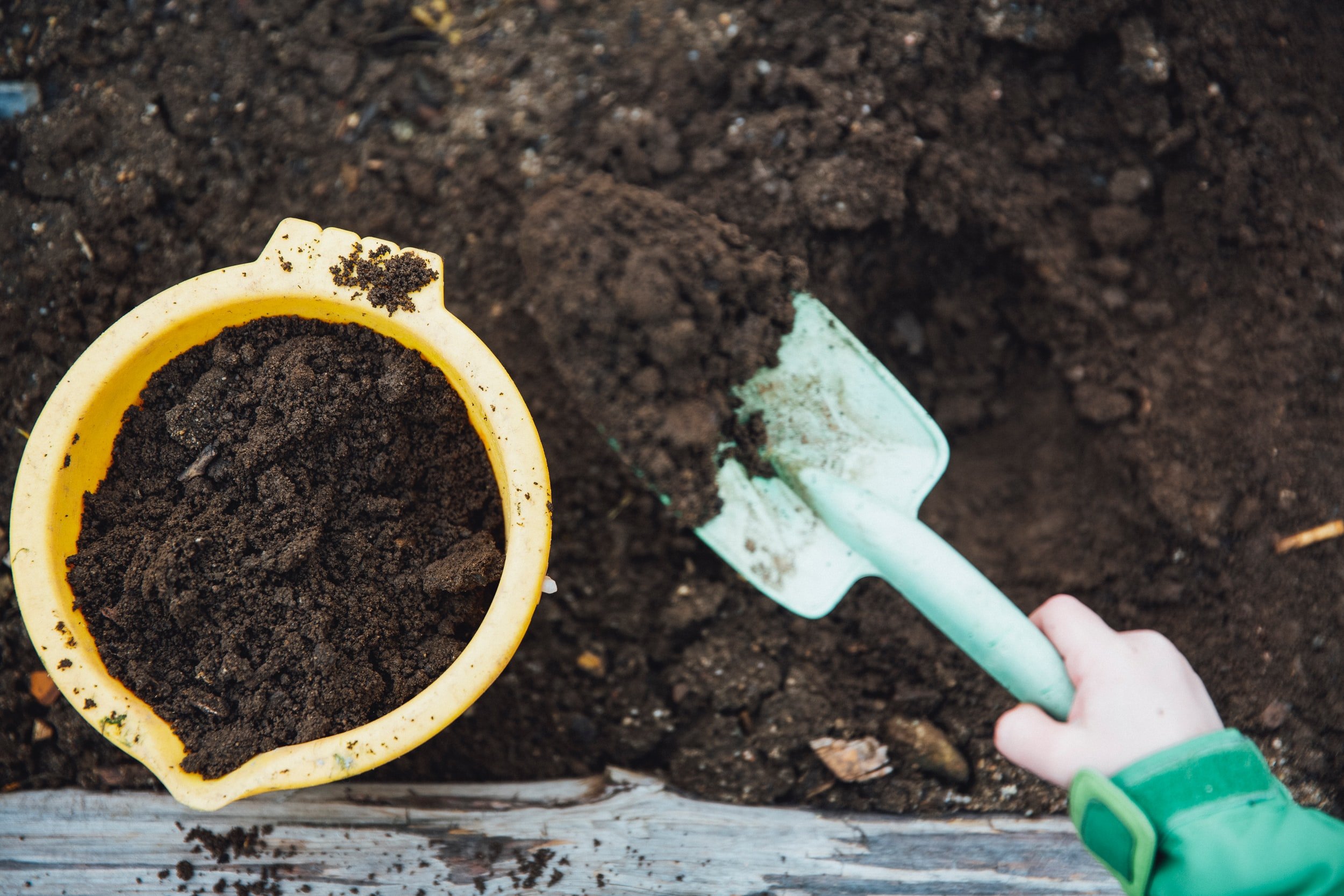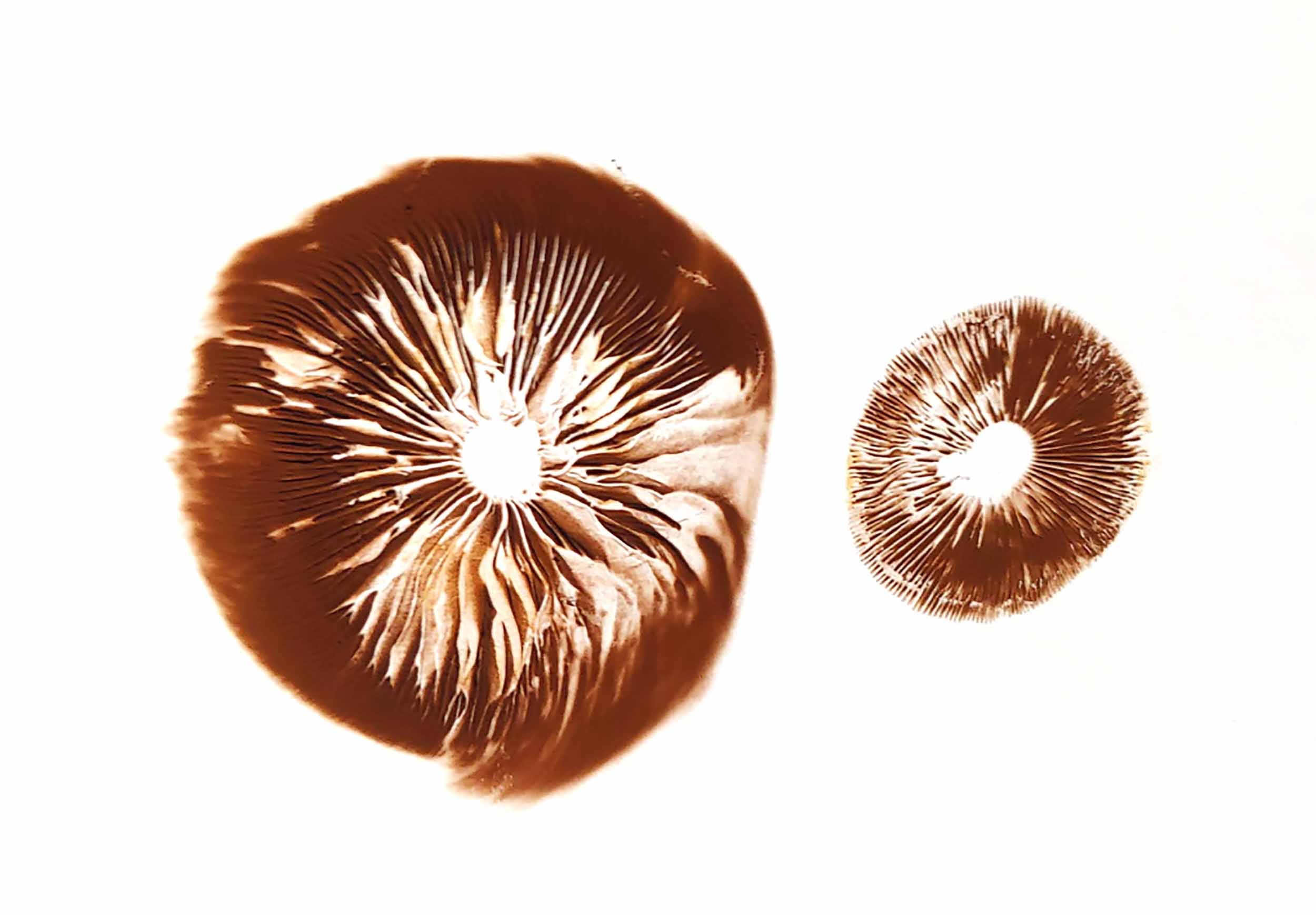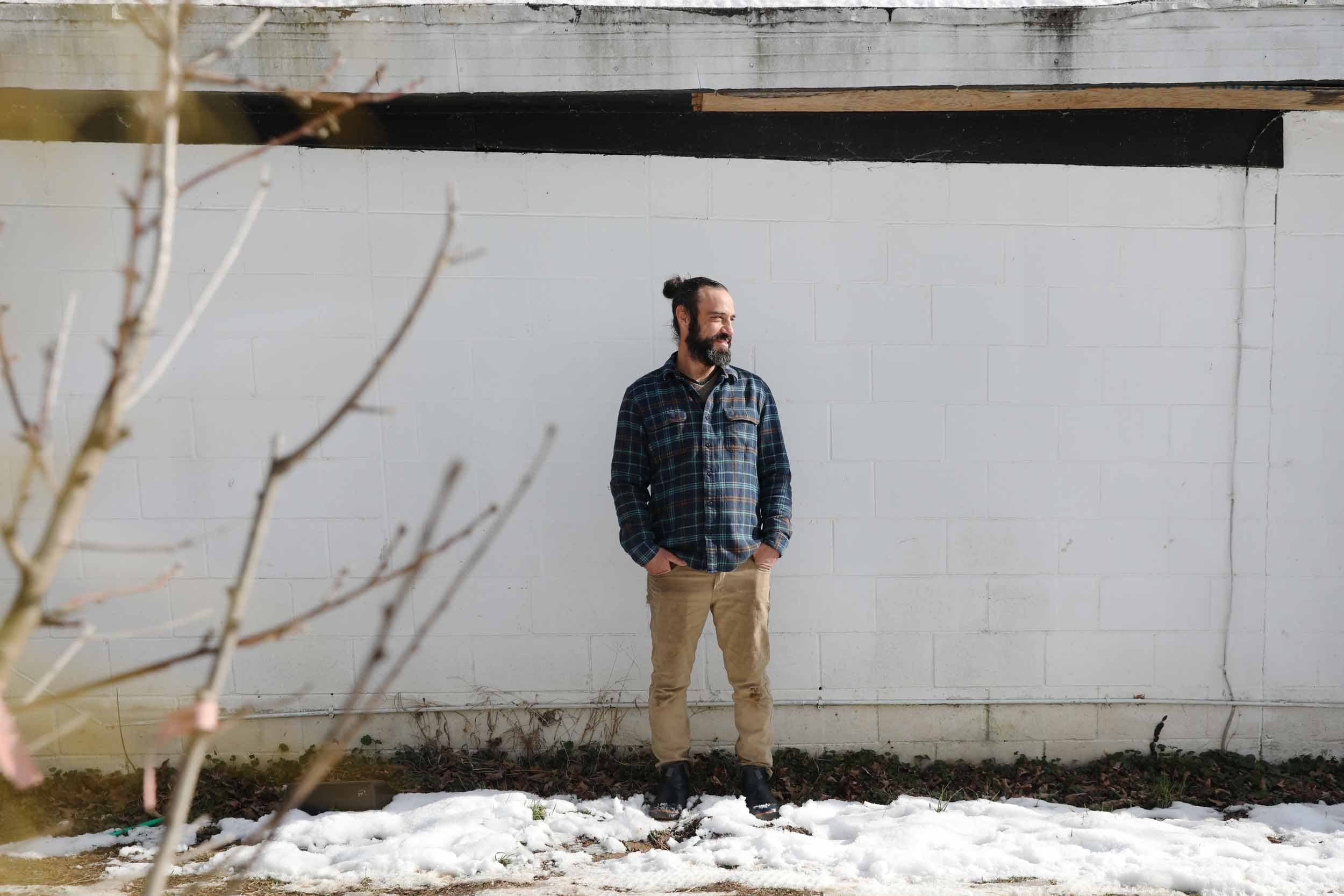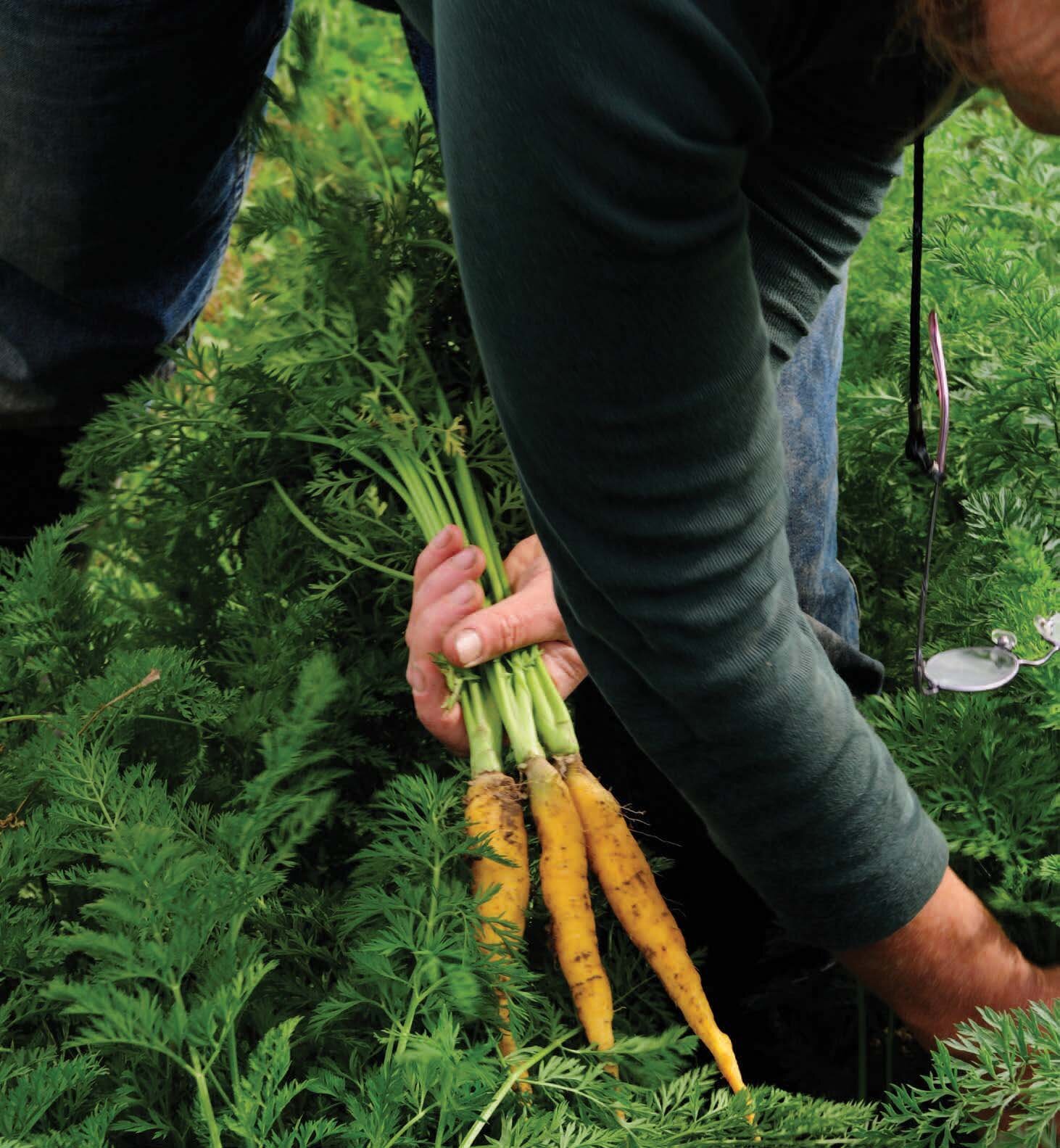It All Starts with Soil
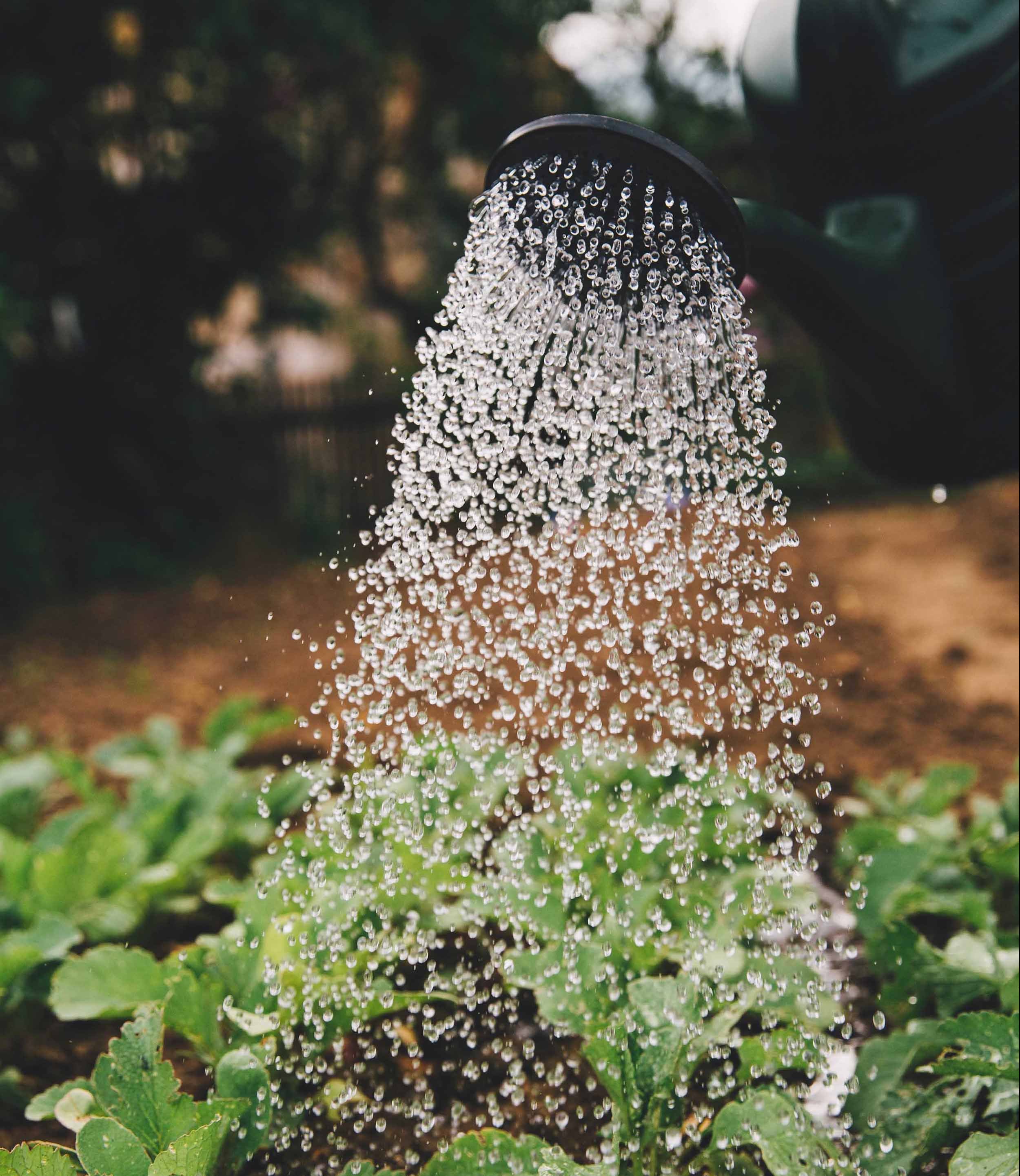
Before picking out plants, make a plan to build a better foundation for your garden.
by Hannah Purnell
Soil is the home gardener’s most valuable asset. Yet most of us don’t know what’s in our native soil, or what it needs to support a thriving ecosystem. What we do know is that there’s a big difference between a successful garden and one that’s barely scraping by.
That difference is soil composition.
Plants want to grow; it’s their raison d’etre. Flowers and vegetables will fight against all odds to survive, but in order to thrive they need proper soil conditions for every stage of their development. That’s why farmers, agricultural professionals, and academic experts are so deeply invested in improving soil health for better crop yields and farm profitability.
Despite their tenacity, plants are sensitive to the quality—not to mention the type, depth, and texture—of the soil around them. But there’s hope for the gardening layperson. You can replicate many of the same practices used by the pros to achieve great success in your home vegetable garden or perennial landscaping.
What Makes Soil Healthy
Strictly speaking, soil is composed of three basic mineral particles—sand, silt, and clay. The dominant particle determines a soil’s texture, and in turn its ability to retain air and water. The ideal soil texture contains equal parts of each and is referred to as “loam.”
Here in the Ohio Valley, our clay-heavy soil, or clay-loam, comes with pros and cons for local cultivators.
“Everyone complains about the soil content around here, but I always tell people, you’re better off with clay than sand,” says Aaron Habig, Conservation Program Specialist at the Hamilton County Soil and Water Conservation District. “Sandy soils dry out and tend to lose organic matter more rapidly than clay.”
For that reason, Habig cautions against attempting to break up heavy clay deposits with sandy soil. “In terms of mineral size, think of sand particles as basketballs. Silt would be a golf ball, and clay would be the size of a pinhead. When you mix sand into clay soil, the result would be these clay pinheads filling in the spaces around the basketballs, leaving no space for air and water to flow, essentially like concrete.”
Instead, he advises amending clay soil with organic matter to increase porous space for healthy soil. That’s in keeping with Habig’s primary rule of thumb for home gardening: Try to mimic Mother Nature herself, rather than approaching your garden as a commercial endeavor.
Because soil is much more than ground-up minerals. It encompasses a dynamic ecosystem: organic matter in various stages of decomposition; microscopic organisms like bacteria and fungi; and larger critters like worms, insects, and rodents. These elements all play a role in supporting healthy and vibrant plant life.
Habig explains: “If you were to take a soil sample from an undisturbed forest or prairie, the composition would break down into roughly 45 percent mineral, 25 percent water, 25 percent air, and only about 5 percent organic matter. If you can achieve more than 5 percent organic matter in your garden, that’s great, but it’s not necessary.”
Location, Location, Location
No, the biggest challenge to gardening locally isn’t our clay content. It’s the fact that much of the suburban soils in our region have been disturbed and compacted to the point of organic depletion.
Soil structure refers to how all those particles of clay, sand, and silt fit together, and to the spaces (or “pores”) in between them. Structure affects how soil clumps, how it holds water or allows runoff, how it accommodates organic matter and insect life, how it delivers nutrients to plants. The action of root penetration, wet and dry cycles, freezing and thawing, and animal habits can increase the space between particles. Construction, tilling, backfilling with nonnative dirt, and other human activity can compact or otherwise negatively alter the soil’s structure.
So soil quality can vary wildly in heavily suburbanized areas, even within the same property. It might stand to reason, then, that the first step would be to request soil testing from your local conservation district. (More on that later.)
A better place to start a flower or vegetable garden from scratch is by picking a spot on your property that is:
South-facing or appropriately sunny for what you’re growing. Most vegetable crops need six or more hours of direct sunlight per day; many flower varieties need less.
Fairly well-drained, since drainage problems (and therefore fungal diseases) tend to plague boggy areas.
Easy to access from your house and in close proximity to water hoses and rain barrels.
Attractive, for both you and your neighbors.
If limited real estate makes it tough to choose between food crops and flowers, Habig says you can do both. By adding a bush bean or pole bean trellis to your perennial flower bed, you can maximize space while boosting nitrogen and pH levels for neighboring plants. The same goes for fall squash plants, whose vines can quickly cover a 6-foot-by-6-foot space and limit airflow. Growing vertically is a great way to rectify this problem, and in doing so, guard against fruit rot, powdery mildew, and other soil-based issues.
Let Nature Do Your Prep Work
With your garden spot picked out, it’s time to prep the soil for planting. Tilling might seem like the best approach for improving air and water flow, especially in early spring when soil is most saturated—but this often has the opposite effect of compacting the soil and collapsing usable airspace.
“It’s fine to till the soil once to incorporate organic matter quickly, but it probably won’t be necessary or beneficial to do it again,” Habig says. “Microbial glues made from bacteria and fungi form the basis for healthy soil, and breaking up soil disrupts that structure. The best soil is always going to be where there’s very little disturbance.”
Habig cites Walnut Creek Seeds in Carroll, OH, as a leading example. David Brandt and his family have practiced and advocated for no-till farming and cover cropping for close to 40 years. The farm produces cover crop seed and non-GMO corn and soybean seed for both commercial growers and home gardeners. The farm is living proof of Brandt’s philosophy: It uses about one-tenth of the fertilizer used by comparable operations. “Those nutrients and water are being held in the soil by organic matter and not tilling,” Habig says.
He recommends adding organic matter to the soil through composting. This allows invertebrates like earthworms and pill bugs to burrow and tunnel more freely. As they go about their daily business, their movements churn and aerate the soil, ultimately improving its overall quality.
You can purchase compost or make your own using kitchen scraps, dead leaves and branches, unbleached paper, and other organic materials. Similarly, you can tend an intentional compost pile to feed your garden, or simply lay compostable materials directly on top of the soil, otherwise known as composting in place or sheet composting. Regardless which method you choose, the goal is to achieve the right green-to-brown ratio. Green components like kitchen scraps and fresh-cut grass clippings provide essential nitrogen, while brown components like cardboard and dead leaves add valuable carbon to the mix. (Find more information on home composting at EdibleOhioValley.com/Garden.)
Get Help from the Experts
Testing your soil is the next step to gardening success—and doing so is easier than you might think. Even within the clay that’s common in our area, soil composition and quality can vary drastically from place to place in your own yard. To quickly gauge mineral composition, simply rub a small amount of soil between your fingers. Sandy soils will feel gritty, while clay and silt will feel smooth or even slippery.
Soil (or more accurately, water held in soil) is the conduit for macro- and micronutrients like nitrogen (N), phosphorus (P), and potassium (K) that plants need to thrive. And the soil’s acidity (its pH measurement) affects how accessible those nutrients are to plants.
To learn your soil’s content, your best bet is to request testing through groups like Habig’s at the Hamilton County Soil & Water Conservation District. They partner with the University of Pennsylvania’s Penn State Extension to provide soil testing to Hamilton County residents.
Pick up a test kit for free, and there’s a service fee to complete the analysis. After that, the district even provides free consultation and guidance for residents. Other county Soil & Water Conservation Districts, as well as land grant university extension offices (Purdue, University of Kentucky, and Ohio State), offer soil testing.
“When submitting a soil test, be sure to indicate what you’re trying to grow,” says Habig. “That will help the team home in on the nutrients your soil needs for different objectives. Your results might say everything is good, or they’ll give you recommendations for pH, phosphorus, potassium, magnesium, and calcium levels.”
Habig says most soil analyses for our region don’t test for nitrogen, since there’s a wide range of types and they can be fleeting. Similarly, phosphorus, calcium, and magnesium deficiencies are typically less of a concern since these nutrients appear so abundantly in our bedrock. But the tests will identify other characteristics or shortages, information you can then use to add one or more organic soil additive.
Plan for Next Year
Once your soil is optimized for growing, take the long view and decide how you will manage soil health from year to year. Here again, Habig says following your gardening instincts may not be the most reliable plan of action.
“If you think about what most people do in the fall after harvest, they go in and rip everything up and put their bare garden to bed for the winter,” he says. “That’s a mistake, because all the beneficial soil microbes and fungi that have been building symbiotic relationships with your plants all summer—they suddenly have no food source, and they die.”
The solution? Cover crops. Typically planted late in the season, cover crops serve two essential purposes: They scavenge nutrients to remove any excesses, while at the same time protecting the soil from heavy rains and erosion over the winter months. It’s logical, Habig says, since root systems feed soil microbes and invertebrates.
“Weeds are nature’s scabs—they grow where there’s nothing because nature wants something there,” he says. “If you don’t want the weeds, you can grow something that will be more beneficial for you, like radishes.” And as always, Habig cautions against tilling at the end of the season, since it brings weed seeds to the surface and disrupts healthy soil structure.
Many cover crops die naturally during harsh winter conditions, and as they decompose, they help fumigate the soil and kill off nematodes and other undesirables. By spring, you can kill off any remaining cover crops (either by pulling or using an organic herbicide) and plant a new garden in soil that’s been carefully preserved via natural processes.
Moving crops to different locations each year can also minimize pests, disease, and other soil issues. Habig recommends a three-year rotation schedule for vegetables, alternating between heavy- and light-feeding plants.
“Each plant has unique nutrient needs, and growing the same plants year after year depletes those nutrients,” he says. “If tomato blight appears in your garden, it will return to the scene of the crime unless you take measures to diversify the soil biota with a plant from a totally different family, such as beans or squash, that can take advantage of different nutrient profiles.”
Since rotating crops can be a challenge, especially in small raised beds or containers, Habig says it’s even more important to regularly apply compost and organic amendments. He recommends cutting the soil with green manure, which can be done multiple times throughout the growing season, to increase fertility and organic matter content.
Kentucky farmer-poet Wendell Berry called soil “the great connector of lives … the healer and restorer and resurrector.” We home gardeners can play a role, even a small local one, in rebuilding soil and sustaining our environment.
Local Resources
The Soils Extension Program at The Ohio State University offers research-based information and programming on sustainable soil and land management focusing on the value, use, and management of soil resources. Its educational programming and outreach publications also focus on soil fertility and nutrient management.
Growing Trade Pet & Plant
Gardening supply store in Northside
Civic Garden Center
Gardening education in Walnut Hills
Soil Testing
Hamilton County Soil & Water Conservation District
Warren County Soil & Water Conservation District
Dearborn County (search ‘soil test’)
Hannah is a graduate of NKU's political science program and a freelance creative who writes extensively about development in Greater Cincinnati. She doesn't like to fly, but she loves to travel. Her favorite books are A Tree Grows in Brooklyn and Love in the Time of Cholera.


